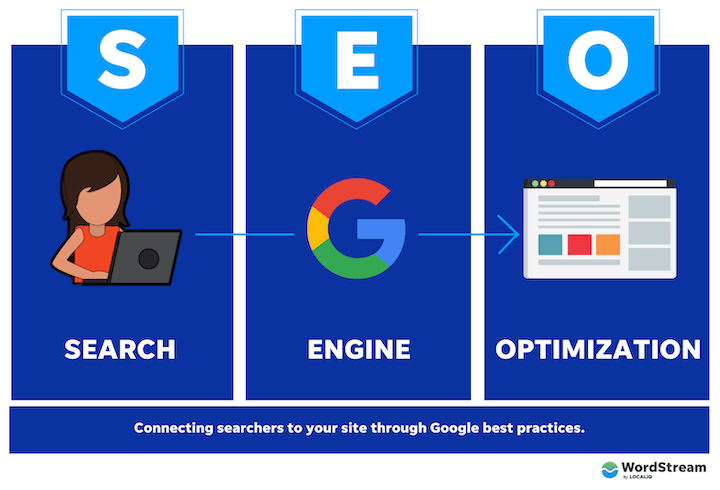Local map listings are online business profiles that provide essential information like business names, addresses, phone numbers, and websites. They can also include customer reviews and other details relevant to a local search.
A well-optimized Google My Business (GMB) profile can lead to increased visibility and more website traffic for a local business. It can also help businesses get into the Local Pack – the top three local search results on Google. Visit https://www.condoridigital.com/ to learn more.
Local map listings are online business profiles that display key information about a business, including its address, phone number, website, and hours of operation. They are displayed on search engine results pages when someone searches for a service or product in their area. These profiles can help businesses increase their visibility to local customers, leading to more foot traffic and website visits.
Keyword research is a practice that helps search engine optimization (SEO) professionals find and analyze the search terms that people enter into their search engines. It involves using tools like Google Keyword Planner, SEMrush, and Moz’s Keyword Explorer to identify keywords with high search volume, low competition, and relevance to the target audience. After identifying the best keywords, SEO professionals must then optimize their website and Google Business Profile to rank for those words.
When it comes to local SEO, listing your business in the Google Map Pack is a vital part of your strategy. This placement takes up prime real estate in the search engine results page, and it can significantly increase your business’s organic traffic. However, ranking in the Google Map Pack doesn’t come easy. You’ll need to implement a range of local SEO strategies, including Google Business Profile optimization, positive customer reviews, and more.
Optimizing your Google Maps listing is essential for local SEO, as it shows up in the search results page with a high click-through rate. It also offers a platform for customers to leave reviews and interact with businesses, which can increase the likelihood of a purchase. Having an optimized Google Business Profile is the first step to getting your business in the Map Pack.
A well-optimized local map listing should include photos of your products and services, as these can help customers build trust in your business before their first meeting. It should also feature reviews and ratings from previous customers, as this can boost customer confidence and encourage them to visit. Finally, it should be clear and concise so that users can quickly find the information they need.
On-page optimization
Local map listings are one of the most important elements of a business’s online presence. They provide users with the information they need to interact with your company, such as its physical address, hours of operation, service options (in-store pickup, online ordering, dine-in), and reviews from past customers. Employing a local map listing optimization service is an effective way to boost your online and local search rankings.
In order to rank in the Google Map Pack, you need to optimize your business’s online profile and website. This is a complex process that involves several different strategies. The first step is to create or claim your business’s Google Business Profile. You should fill out all the information in your profile accurately, including your contact information, website link, and location. You should also add photos, videos, and relevant keywords.
The Google Map Pack is a prominent section in the local search results that showcases the top-ranked local listings. It’s an important placement for businesses because it can drive more traffic to their website and physical locations. Optimizing for the Google Map Pack can help you achieve higher organic search engine results and increase the number of phone calls your business receives each day. Moreover, it can also improve your business’s visibility in the local community and generate more brand awareness. Consequently, it’s a great investment for your company.
Google My Business optimization
Google My Business (GBP) optimization should be one of the top priorities in any local SEO strategy. GBP is a free tool that allows businesses to optimize their Google Maps listings and manage customer reviews. Having a well-optimized GBP listing will improve the chances of your business appearing in Google Search and the Local Pack, which are the top three businesses listed on a search results page.
The GBP dashboard gives businesses a clear overview of their listing performance, including how many clicks and views their listing has received over time. This information can be helpful in assessing whether or not your local SEO strategy is working. In addition, GBP offers insights into the number of customers who discovered your business through Google Search. These customers can be either potential or existing customers.
Having a well-optimized Google My Business profile is critical to your local map ranking. This is because GBP is where Google pulls a lot of business information for its search results and local maps. It also plays a major role in determining which businesses appear in the Local Pack, which is the section of search results that shows a map and three businesses in your local area.
GBP optimization involves adding accurate and consistent business information to your profile. This includes your address, phone number, and business hours. You should also add photos to your listing and update them regularly. In addition, you can use Google Posts to share updates about your business. You should also encourage happy customers to leave reviews, as these can boost your local ranking.
You should also pay attention to the accuracy of your Maps pin placement. This is especially important if you have multiple locations. For example, if you have two restaurants with the same name and address, it is crucial to select the correct location for your Maps pin. This will ensure that your locations are ranked in the same place in search and Maps.
Another way to improve your local map ranking is to use schema markup on your website. Schema markup is a form of structured data that helps search engines understand your content better. It can be used to add information about your location, such as hours and addresses, which is essential for local search rankings. In addition, you can also use it to add photos and reviews to your site.
Link building
Local search engine optimization includes the use of links to boost a business’s website ranking. This will increase the number of visitors and customers to the website and improve business profits. It also ensures that potential customers know the physical location of a business, directions to it, operating hours, and ways to contact them.
Optimizing for the Google Map Pack is a powerful strategy to increase local traffic and organic rankings. It involves a variety of strategies, including Google Business Profile optimization, keyword research, and other SEO best practices. This way, your business will appear on the first page of Google and will attract more customers from local search. It will also help users easily navigate to your physical location or find the nearest branch of a company. Our digital marketing services will enhance the visibility of your local business, which will result in a higher number of calls and sales per day.

